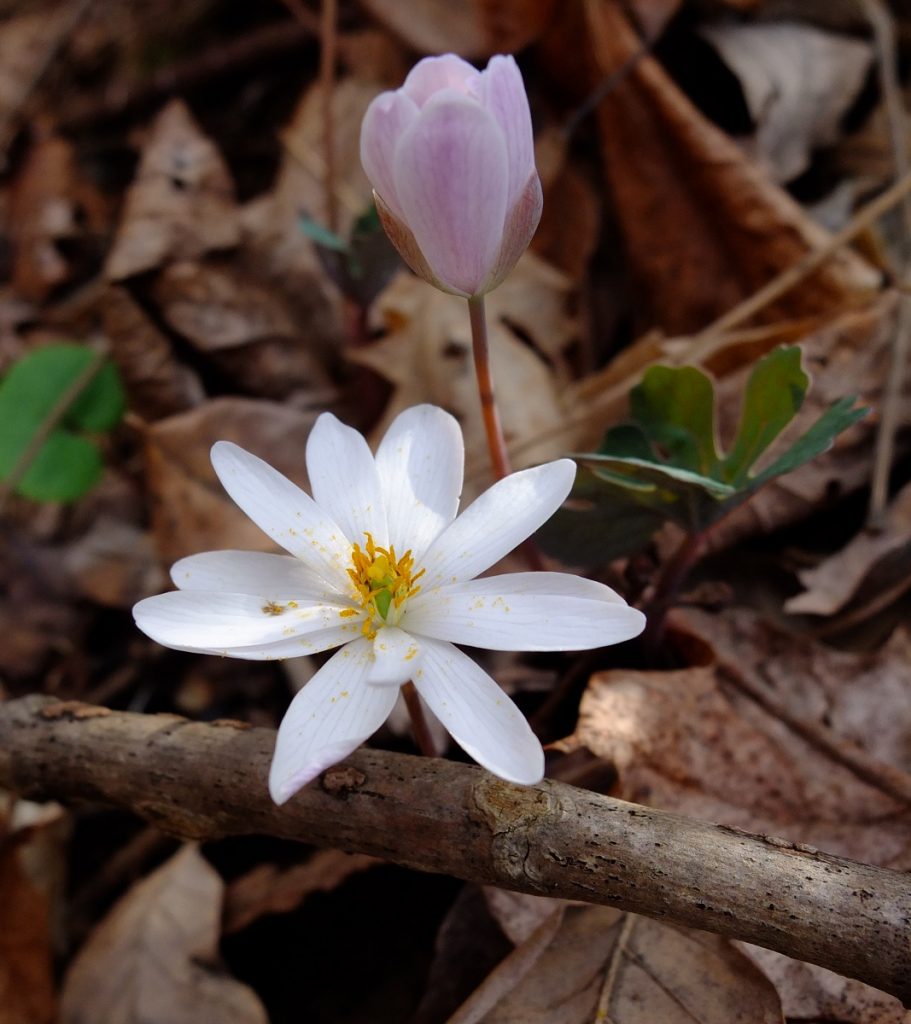
Bloodroot is one of the most iconic spring wildflowers of eastern North America. Emerging in the early spring and blooming for only a few days, you could miss it if you blink! I love going on long walks in the early spring and finding the closed bloodroot flowers emerging pink along the wooded hillsides. When they first appear they are wrapped in a blanket made by the rolling, intricate-lobes of the leaf.
After the flowers have unfolded, they are pearly and beautiful and white. In less than just one week, the petals will have fallen to the ground, dropping off their buds one by one. While the flowering of bloodroot is brief, the foliage persists into the summer.
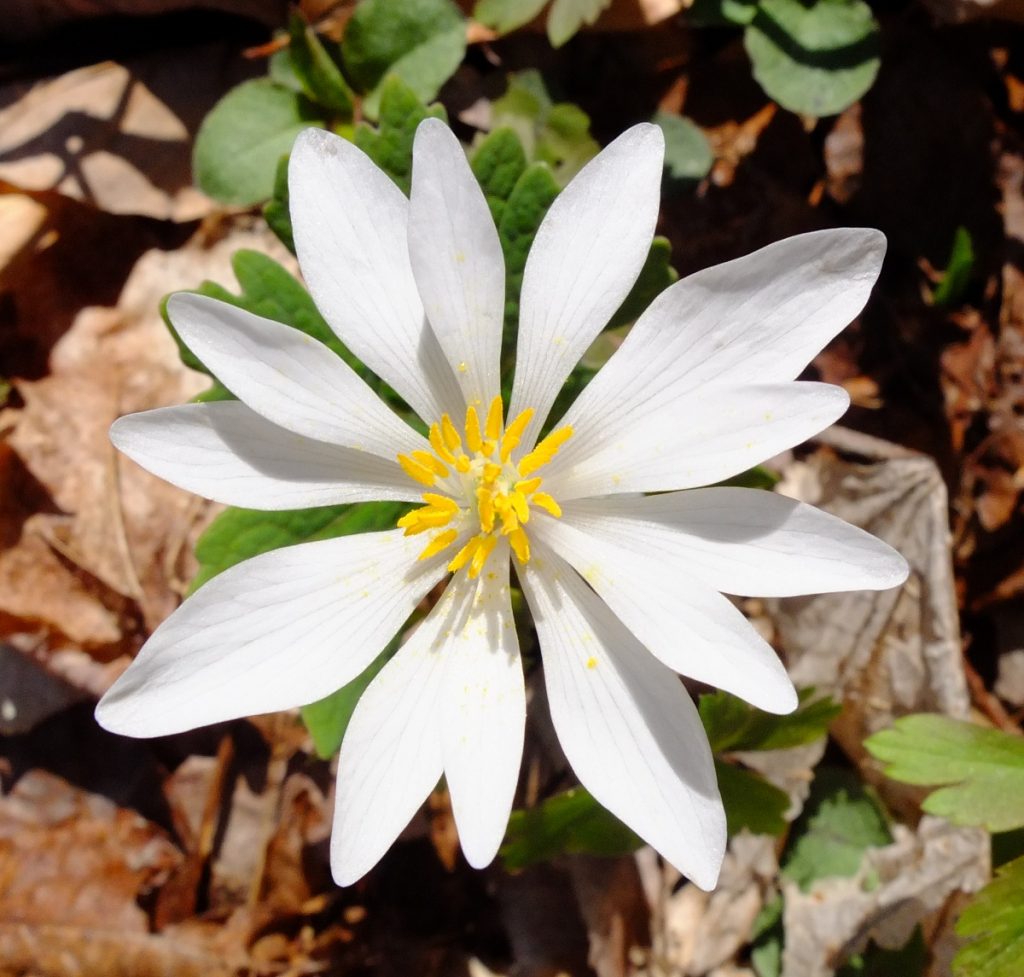
Sanguinaria canadensis, the eponymous bloodroot, is in the poppy family Papaveraceae. The poppies are known for being lactiferous, meaning they bleed a milky latex substance. Bloodroot bleeds a red sap.
The red sap of bloodroot has been used as a dye and as a body paint. Another common name for bloodroot is red puccoon. Puccoon is an Algonquian word denoting a plant used as dye. Among other well-known puccoon roots are yellow puccoon (goldenseal — Hydrastis canadensis) and hoary puccoon (Lithospermum spp. — yields a red pigment).
Bloodroot is also an important medicinal plant. It is used mainly for its antiseptic properties, and also in small doses as a respiratory-system stimulant. I’ll defer to the herbalists for better information on bloodroot’s medicinal applications. A Google search reveals lots of information, such as this general overview.
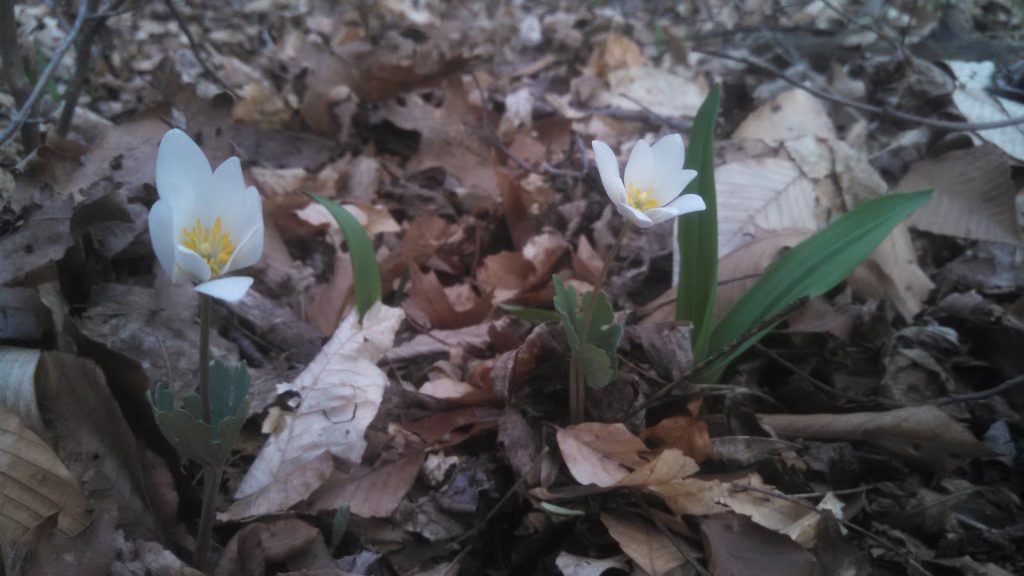
In southeastern Pennsylvania, Sanguinaria canadensis usually emerges around late March, as soon as the threat of snow goes away and day-time temperatures begin to warm. Down south, bloodroot can be spotted in February, and up in southeastern Canada bloodroot might come up as late as May.
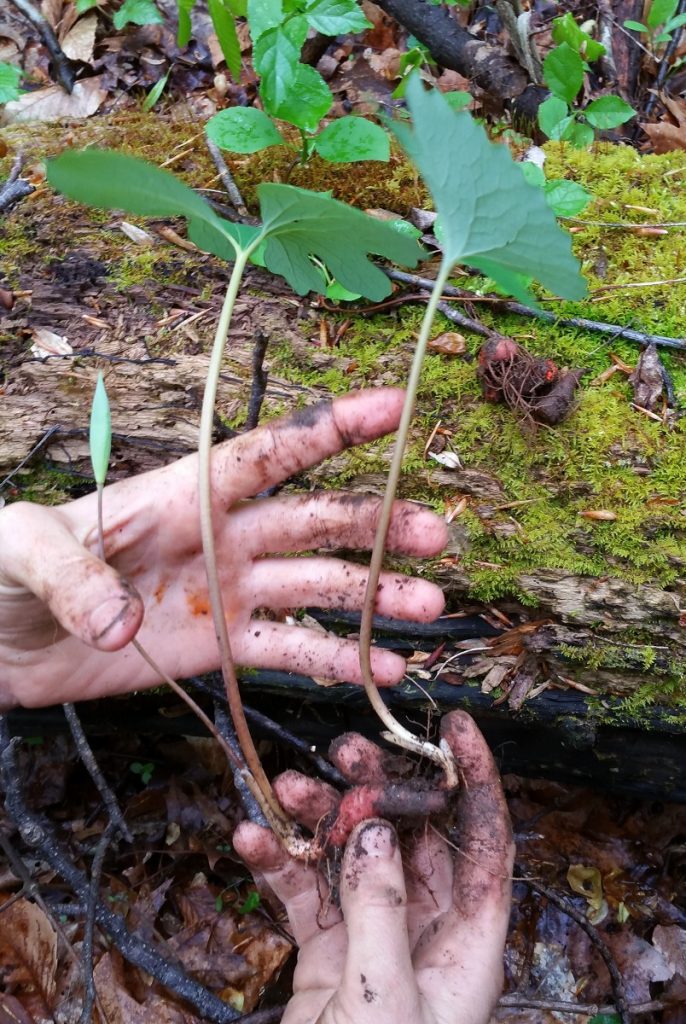
In the picture above we can see the anatomy of Sanguinaria canadensis. It grows from a fleshy rhizome that is a deep red color giving it the name bloodroot. The rhizome may be divided as a propagation method, or as a gentle harvest technique (taking only a portion of the root and leaving the rest to grow in the following year). The flowers and leaves grow individually from separate shoots off the rhizome.
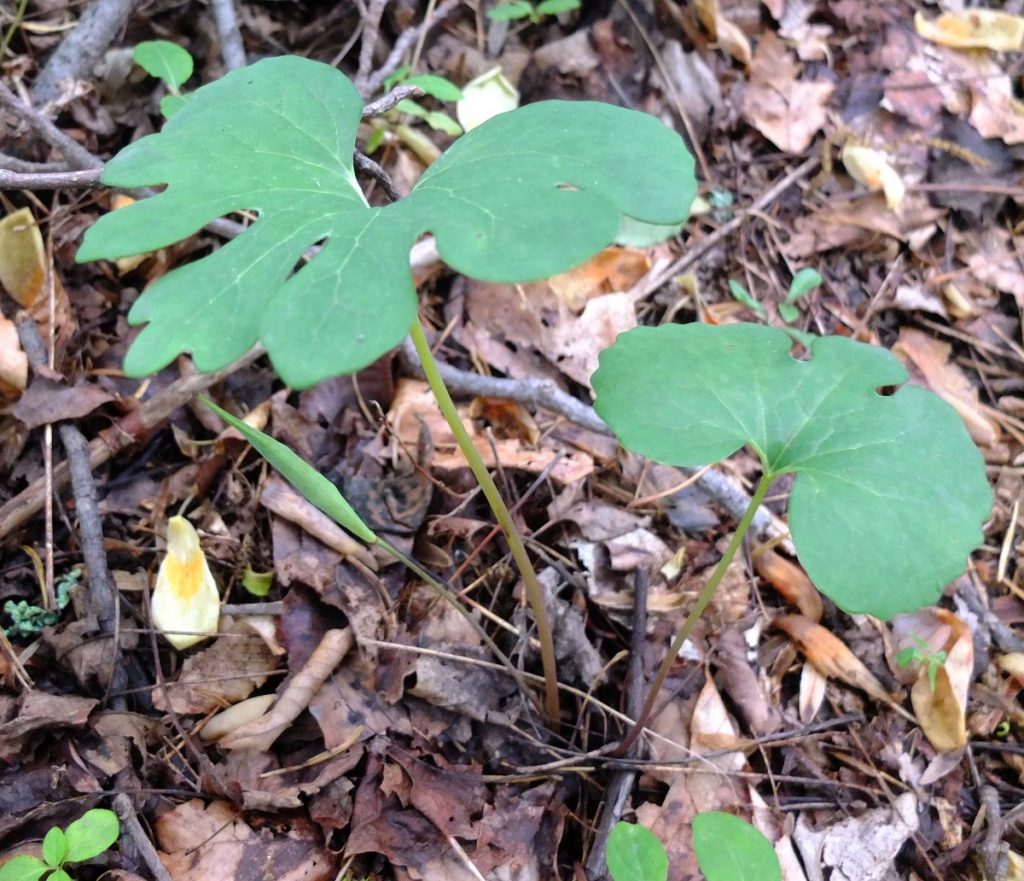
The seed pods of Sanguinaria canadensis ripen in the late spring or early summer. I gather seed during the last days of May in Pennsylvania. When ripe, the pods should easily split open upon handling. Left alone, they will spill their contents to the ground below. You will know the seeds are ripe when they have matured to a rich mahogany color.
Each seed bears an elaiosome, which is a fleshy, lipid attachment made up of fats and sugars. These elaiosome attachments are attractive to ants, who gather the seeds off the ground and carry them into their underground colonies. There, they eat the elaiosome and then cast the seed bit into their rubbish pile… conveniently still located under the ground! Here the seeds await germination while enjoying safe shelter and ideal conditions. This process of ant-plant symbiosis is called myrmecochory.
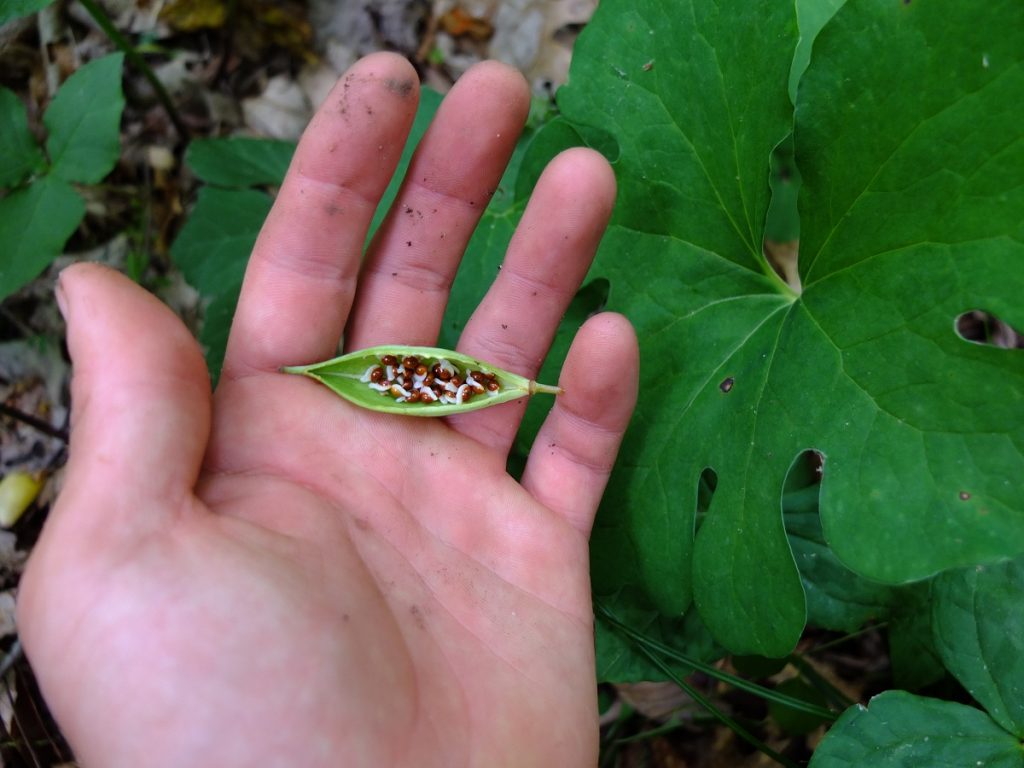
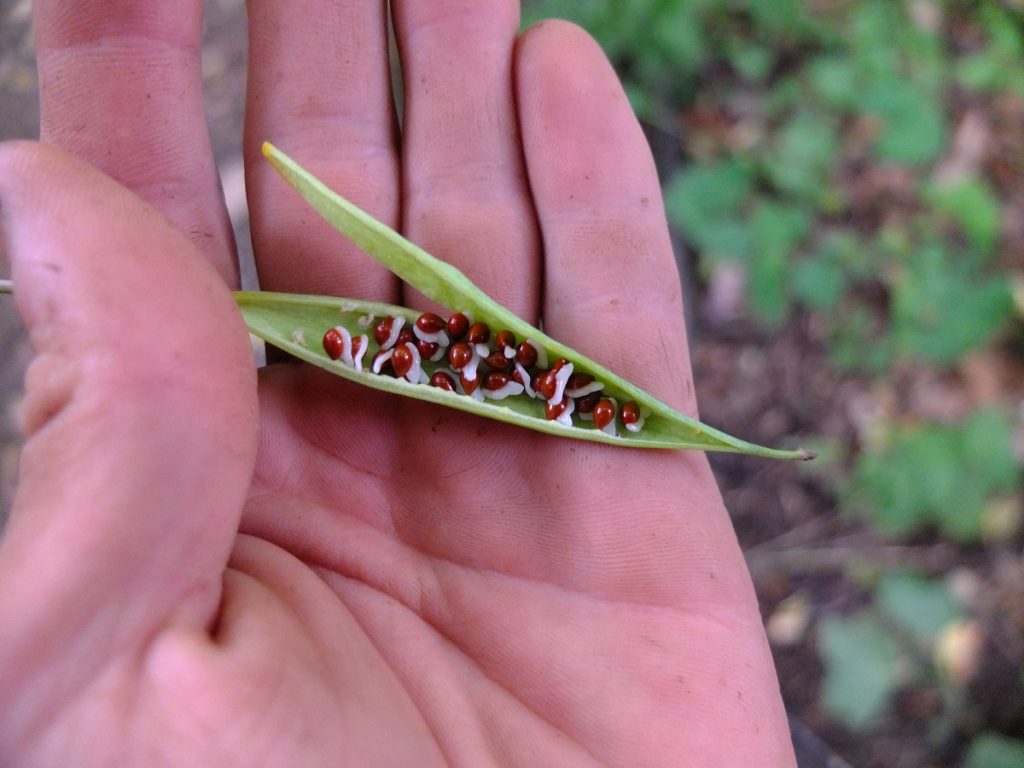
Bloodroot seeds are double-dormant and require two cold periods or two stratifications before germination. If sown in the late spring or early summer, the seedlings will not emerge in the following spring, but the spring after.
The seeds of bloodroot are intolerant of drying and must be stored cool and moist. Placing them outside with soil in a well-drained container such as a pot is an effective low-tech storage method. Otherwise, they will need to be kept moist-packed and refrigerated, or sown immediately.
Once germinated, bloodroot should be grown directly in the ground — it does not seem to do well growing in a container. It may take several years before a plant puts out its first flower. While I do not know exactly how many years, I treat it as a seven-year-plant much like camas, Trillium, or wild leeks.
Bloodroot is uncommon or threatened in many places, and so I like to spread its seed around in whatever woodlands it will take to well. Although it is tough and resilient once established, and plants can be very long-lived, it is sensitive to too much light and high-sun conditions, and thus has been exterminated from many second-growth forests recovering from a legacy of clearcutting or animal-grazing. This is one older forest species which really requires mesic or moist soil conditions to thrive.
I would love to do an invitro germination of bloodroot- a few weeks instead of 2 years. Let me know if you have fresh seed to work with.
Hi Chris! I do, and will contact you and send some.